
Best time to visit Kedarnath – 1st Kedar of Panch Kedar Yatra
Discover Kedarnath’s divine beauty during May to June the best time to visit Kedarnath. At the optimal time for pilgrimage, the temple opens. A sacred odyssey awaits.
The best time to visit Kedarnath is May to June, offering pleasant weather and temple access. Explore the Himalayan tranquillity and sacred vibes. Plan your pilgrimage for an enriching experience. The clear skies during this time also provide excellent visibility, enhancing the overall pilgrimage experience. It is advisable to plan your visit to Kedarnath during these months to ensure a comfortable and spiritually enriching journey. Kedarnath is First Kedar / प्रथम केदार / Pratham Kedar from Panch Kedar Yatra.
Kedarnath stands as a sacred sanctuary for seekers and pilgrims alike. Home to the revered Kedarnath Temple, dedicated to Lord Shiva, this pristine town exudes a divine aura against the backdrop of snow-capped peaks. Kedarnath not only offers spiritual solace but also mesmerizes with its natural beauty. The Mandakini River flows gracefully, and the surrounding mountains create a tranquil ambience. The journey to Kedarnath is an adventure of the spirit, inviting all to partake in the divine energy that permeates this Himalayan haven.
The Best time to visit Kedarnath is
| Seasons | Months | Tempretures |
| Summers | April-June | 15°c – 30°c |
| Monsoon | July-September | 12°c – 27°c |
| Autumn | October-November | 0°c – 15°c |
Here are the details for the best time to visit Kedarnath:
1. Summers
- Pleasant weather:
As winter recedes, Kedarnath emerges from its snowy cocoon, inviting pilgrims to embark on a soulful journey. From April to June is the best time to visit Kedarnath Temple, the sacred town awakens to pleasant weather and blooming landscapes. The crisp mountain air, coupled with the warmth of the sun, makes this the optimal time for pilgrimage. - Temple opens for pilgrims:
The revered Kedarnath Temple opens its doors, beckoning devotees to experience spirituality amidst the majesty of the Himalayas. Pilgrims traverse through picturesque landscapes, crossing rivers and ascending challenging terrains, all in pursuit of seeking the divine blessings of Lord Shiva. - Blooming landscapes:
As the snow begins to melt, the Mandakini River flows gracefully, mirroring the purity and serenity of the spiritual quest making it the best time to visit Kedarnath. The pilgrimage during these months is not merely a physical journey but a profound soul odyssey, where nature and spirituality converge to create an unforgettable experience. The best time to visit Kedarnath in Summer is from Kedarnath’s Kapat Opening Date to July Last week.
2. Monsoons
- Lush greenery:
During the monsoon, Kedarnath transforms into a serene haven, offering a unique and tranquil experience. From July to September, the sacred town is adorned with lush greenery, as the monsoon rains breathe life into the surrounding landscapes. - Occasional rain showers:
While occasional rain showers add a rhythmic melody to the air, the Mandakini River flows gracefully, reflecting the vibrant foliage. Pilgrims, albeit fewer in number, find solace in the spiritual embrace of Kedarnath amidst the mist-laden mountains. - Spiritual serenity amidst nature:
The monsoon season brings a calmness to the town, allowing visitors to immerse themselves in the meditative ambiance making it the best time to visit Kedarnath for travelers seeking meditation. Though trekking activities may be impacted, the verdant beauty and the unhurried pace make Kedarnath a destination for those seeking spiritual reflection amidst the gentle caress of rain-kissed tranquillity. Monsoon time to visit Kedarnath is August to September.
3. Autumn
- Crisp air:
As autumn embraces the Himalayas, Kedarnath unveils its enchanting beauty from October to November. Crisp mountain air, clear skies, and a vibrant canvas of foliage transform the sacred town into a visual symphony. In Autumn the best time to visit Kedarnath is from October to November. - Vibrant foliage:
Nature, adorned in golden and red hues, creates a serene backdrop for introspection. The journey to Kedarnath during autumn is not just a pilgrimage; it’s an immersion into the harmonious blend of spirituality and nature’s grandeur, leaving indelible impressions on the hearts of those who seek its tranquil embrace which makes it one of the best times to visit Kedarnath. - Closing ceremonies at the temple:
The closing ceremonies of the Kedarnath Temple in November add a spiritual touch to the season. Pilgrims witness the ceremonial closing of doors, a symbolic moment intertwined with the changing hues of the surroundings.
How to reach Kedarnath?
By Air:
- The nearest airport to Kedarnath is Jolly Grant Airport in Dehradun, approximately 239 kilometres away. From the airport, travellers can hire a taxi or take a bus to reach Gaurikund, the base for the trek to Kedarnath.
By Rail:
- The nearest railway station is Rishikesh, approximately 215 kilometres from Kedarnath. After reaching Rishikesh, travellers can hire a taxi or take a bus to proceed towards Gaurikund.
By Road:
The road journey to Kedarnath involves several stages:
- Reach Haridwar or Rishikesh: Haridwar is approximately 250 kilometers and Rishikesh is around 215 kilometers from Kedarnath. Regular buses and taxis are available from Delhi to Haridwar and Rishikesh.
- Travel to Gaurikund: From Haridwar or Rishikesh, proceed towards Gaurikund, the base camp for the trek to Kedarnath. The journey involves picturesque routes and takes around 7-8 hours by road.
- Trek to Kedarnath: From Gaurikund, there are two options: trekking or hiring a pony/palanquin. The trek is approximately 16 kilometres and takes about 6-7 hours. The scenic route passes through picturesque landscapes and the Mandakini River.
- Helicopter Services: Helicopter services are available from Phata, situated on the way to Kedarnath. The helicopter ride offers a quicker alternative for those seeking a shorter travel time.
Important Tips:
- The trek to Kedarnath involves varying altitudes, and it’s advisable to acclimatize adequately to prevent altitude sickness.
- Weather conditions can be unpredictable, so it’s essential to check the current status before planning the journey.
- The Kedarnath Temple is open from May to November, and the weather is most favourable during the summer months for pilgrimage.
Attractions near The Kedarnath:
- Gaurikund: The starting point of the trek to Kedarnath, Gaurikund is known for its thermal springs and the Gauri Devi Temple.
- Triyuginarayan: A scenic village with the ancient Triyuginarayan Temple believed to be the venue of Lord Shiva and Parvati’s wedding.
- Sonprayag: Situated at the confluence of the Mandakini and Songanga rivers, Sonprayag is a sacred spot and a base for the Kedarnath trek.
- Chopta: Known as the “Mini Switzerland of Uttarakhand,” Chopta offers breathtaking views of the Himalayas and is a base for trekking to Tungnath.
- Tungnath: Home to “the highest Shiva temple in the world”, Tungnath is a revered pilgrimage site and a trekker’s paradise.
- Deoria Tal: A pristine lake surrounded by lush green meadows, Deoria Tal offers stunning reflections of the Chaukhamba range.
- Kalimath: Famous for the Kalimath Temple, dedicated to Goddess Kali, this serene spot is known for its religious significance.
- Madhyamaheshwar: A sacred temple dedicated to Lord Shiva, Madhyamaheshwar is accessible via trekking and offers spectacular mountain views.
- Guptkashi: A town known for its ancient Vishwanath Temple and Ardhanareshwar Temple, Guptkashi is a spiritual destination on the Kedarnath route.
Exploring these nearby attractions enhances the overall pilgrimage experience, offering a mix of natural beauty, cultural richness, and spiritual significance.
Kedarnath Image’s Gallery
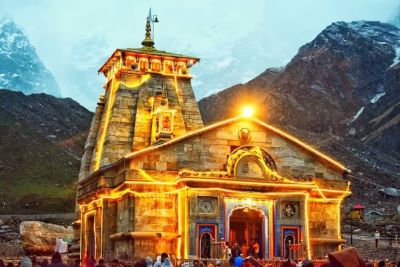
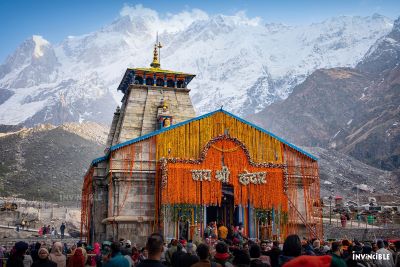
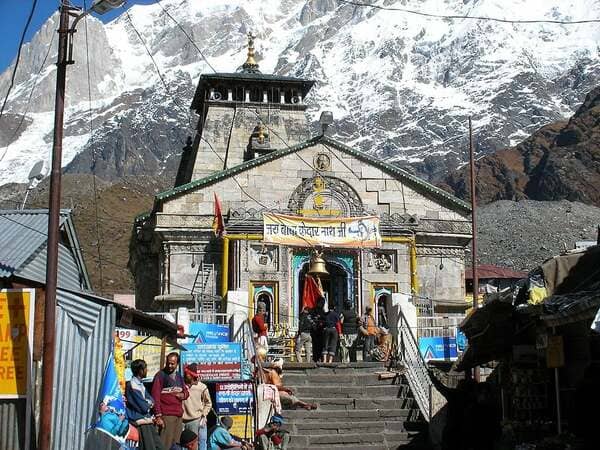
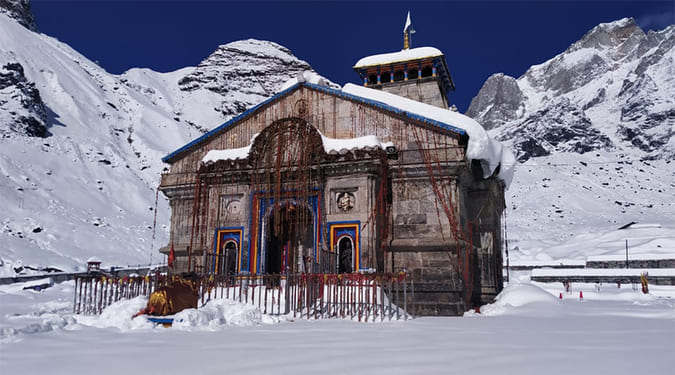
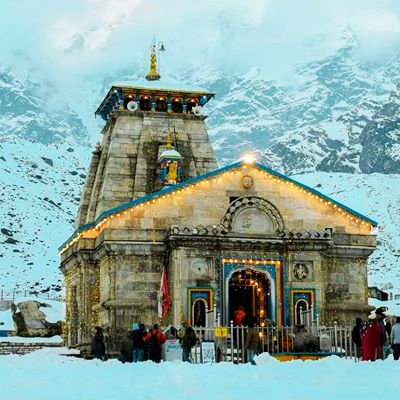
FAQs related to the Kedarnath
1. When is the best time to visit Kedarnath?
The best time to visit Kedarnath is during the summer months, from May to June, when the weather is pleasant, and the temple is open for pilgrims. Autumn (October to November) also provides a serene atmosphere.
2. Is the trek to Kedarnath difficult?
The trek to Kedarnath is challenging but manageable. It covers approximately 16 kilometers and takes about 6-7 hours. Ponies and palanquins are available for those who prefer not to trek.
3. What is the significance of the Kedarnath Temple?
Kedarnath Temple is dedicated to Lord Shiva and is one of the Char Dham pilgrimage sites. Pilgrims believe that a visit to Kedarnath helps in attaining salvation.
4. Is there an entry fee for Kedarnath Temple?
There is no entry fee for visiting the Kedarnath Temple. However, donations are accepted, and devotees often contribute voluntarily to the temple’s maintenance.
5. Are medical facilities available in Kedarnath?
Basic medical facilities are available in Kedarnath, including a government hospital. Pilgrims are advised to carry any necessary medications and consult a healthcare professional before the journey.
6. What are the nearby attractions to Kedarnath?
7. Can I visit other Char Dham sites during the same trip?
Yes, many pilgrims plan a comprehensive Char Dham Yatra, visiting other sacred sites like Badrinath, Yamunotri, and Gangotri during the same journey.